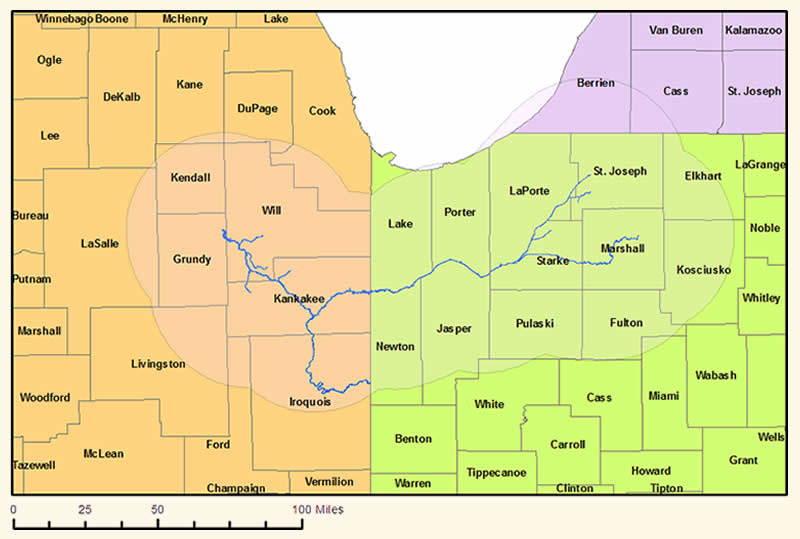On The Trail > Safety
The Kankakee River and its associated waterways are undammed and uncontrolled. There are potentially dangerous areas where the river interacts with both natural and manmade features. Here are just a few points of which you need to be aware:
River Access
Some access points have steep grades; access to the water may not be easy.
Overall, there are very few support facilities such as parking, washrooms, or fresh water.
There may not be clear signage to guide you to obscurely located access sites, or for designated portages around log jams at highway and railroad bridges.
High Water
The river should never be paddled at or near flood stage.
Many bridges will become impassable at various flood stages.
Rainfall events days or weeks previous to an intended paddle will affect river elevations for weeks or months.
Severe Weather
Be alert to changing weather conditions, particularly severe thunderstorms with the potential for hail, damaging winds and flash flooding.
Stay informed by monitoring NOAA Weather Radio:
KZZ58, Kankakee IL – 162.525 MHz
WXJ57, South Bend IN – 162.400 MHz
KWO39, Chicago IL – 162.55 MHz
The Kankakee/Iroquois rivers run through the following counties:
INDIANA: Newton, Lake, Jasper, Porter, LaPorte, Starke
ILLINOIS: Grundy, Will, Kankakee, Iroquois
Severe weather can move in from most any direction. Counties within and outside a 50-mile radius of the Kankakee River are shown on the map below. If you hear these counties included in severe thunderstorm or tornado watches/warning, move to a place of safety immediately.

Lightning
According to the National Weather Service, the vast majority of lightning injuries and deaths on boats occur on small boats with no cabin. If you can hear thunder, you are at risk of a lightning strike — so when thunder roars, go indoors.
You are not safe outdoors in a thunderstorm. See the National Weather Service Lightning Safety web site for information on minimizing your risk when you can’t get to indoor cover.
Log Jams and Treefalls

Treefalls can clog road and railroad bridges with few portage opportunities. You should visually check bridges for obstructions before your trip. If you encounter an unexpected log jam on your trip, head for the shoreline immediately to see if there is any safe passage.
Do not attempt to chance it through what you think might be a possible opening. Stop, look and be certain — if you guess wrong, you can put yourself and fellow paddlers at the risk of capsizing. In a strong current, it is usually impossible to extricate yourself from being entangled in a treefall’s underwater branches.
If you become trapped upstream of an impassable log jam, head for shore, make your way to a road and phone for assistance. Plan ahead with a friend for emergency shuttle if you can’t make it to an intended takeout.